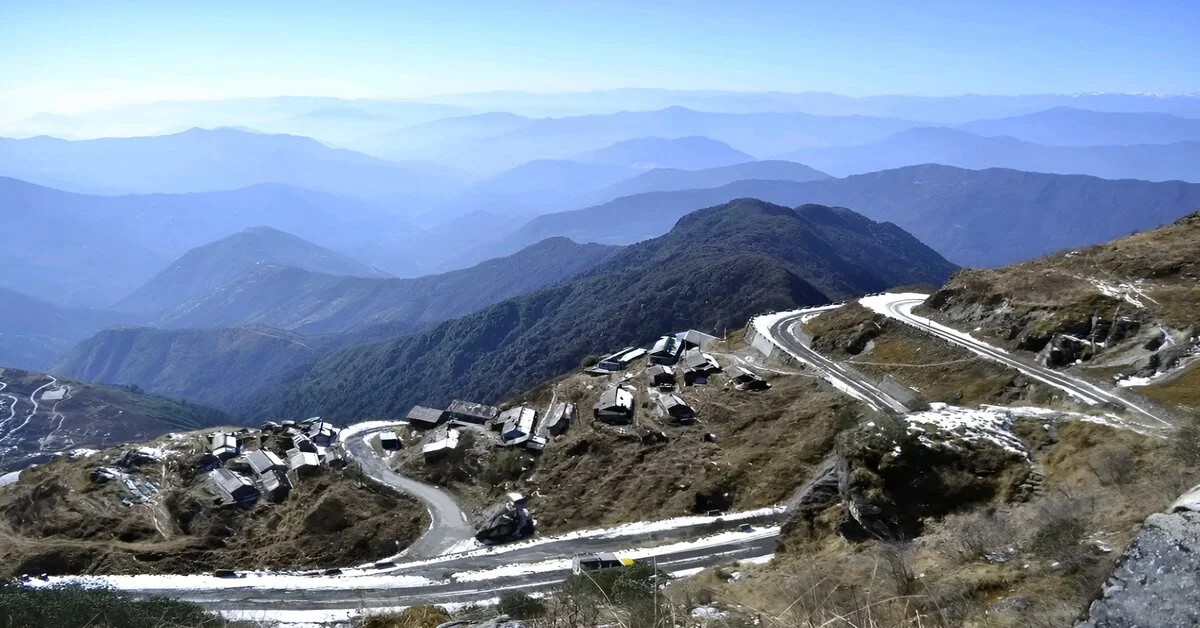
Sikkim, 18th Feb 2025
The proposed political merger of Sikkim and Darjeeling has ignited fierce debates across Northeast India, with critics warning that the move risks eroding Sikkim’s constitutional safeguards, cultural identity, and economic stability under Article 371F. The contentious proposal, likened by opponents to Jammu and Kashmir’s 2019 reorganization, has drawn sharp reactions from Sikkim’s indigenous communities, policymakers, and legal experts who argue that merging the regions could destabilize decades of progress and autonomy.
Demographic Disparities Fuel Identity Concerns
At the heart of the dispute lies a stark population imbalance. According to the 2011 Census, Sikkim’s population of 610,577 is dwarfed by Darjeeling’s 1.84 million residents. By 2031, projections suggest Darjeeling’s population could surge to 2.2 million, while Sikkim’s growth remains sluggish due to its fertility rate of 1.1—the lowest in India. Critics fear this demographic asymmetry could marginalize Sikkim’s indigenous Bhutia-Lepcha communities, who constitute just 20% of the state’s population.
“Sikkim’s cultural fabric could be irreversibly altered,” warned S.D. Tshering, retired Director General of Sikkim’s DESM&E. “Darjeeling’s Scheduled Caste population alone is 14 times larger than Sikkim’s. Resource allocation and political representation would inevitably tilt toward the majority.”
Darjeeling’s population density—586 people per square kilometer versus Sikkim’s 86—also raises concerns about migration pressures. Experts predict overcrowding in Sikkim’s towns, strained infrastructure, and competition for land in rural areas if borders open.
Economic Divide and Political Power Shifts
Economically, Sikkim outpaces Darjeeling significantly. Data from 2013–14 shows Sikkim’s per capita income at ₹1,94,624, more than double Darjeeling’s ₹87,695. Sikkim boasts 93.2% household electrification and an 82.2% literacy rate, compared to Darjeeling’s 77.7% and 79.6%, respectively. However, Darjeeling’s younger, competitive workforce—armed with higher education rates—could dominate job markets in a merged entity, leaving Sikkim’s youth at a disadvantage.
Politically, Darjeeling’s 1.19 million voters would overshadow Sikkim’s 466,000 electorate. A merged state would likely allocate more assembly seats, panchayat wards, and administrative offices to Darjeeling, diluting Sikkim’s influence. The abolition of Article 371F—which reserves 12 of Sikkim’s 32 assembly seats for Bhutia-Lepcha communities—could further weaken indigenous representation.
“If Article 371F is challenged, Sikkim would no longer be part of India,” cautioned Justice D.P. Madon during a 1984 Supreme Court hearing, a statement echoed by Sikkim Bhutia Lepcha convenor Tseten Tashi Bhutia. “We merged with India in 1975, but we shall not be submerged.”
Historical Context and Constitutional Risks
Historically, Darjeeling was part of Sikkim until the British annexed it in 1835. Over 189 years, the regions developed distinct cultural and political identities. Sikkim’s 1975 merger with India included Article 371F to protect its unique status—a safeguard now under scrutiny.
Legal experts warn that integrating Darjeeling would require amending Article 371F, a move that could unravel Sikkim’s “historical and pre-merger status.” Justice Madon’s 1984 remarks resurface in debates: “Any move to integrate land outside Sikkim’s territory would raise serious constitutional questions.”
Pro-merger voices argue unification could spur development in Darjeeling, long neglected under West Bengal’s administration. Yet Sikkim’s residents remain skeptical. “Why risk our statehood for an unequal partnership?” asked Tshering. “Darjeeling’s grievances are valid, but solutions shouldn’t come at Sikkim’s expense.”
Strategic Stakes and Public Sentiment
As a border state sharing boundaries with China, Bhutan, and Nepal, Sikkim’s strategic importance adds urgency to the debate. Indigenous groups warn that undermining Article 371F could fuel unrest in a region critical to national security.
Public sentiment in Sikkim remains overwhelmingly protective of its autonomy. A recent social media campaign—#Protect371F—has gained traction, reflecting widespread opposition. “We stand with India, but our identity isn’t negotiable,” said Bhutia.
With tensions escalating, the central government faces a delicate balancing act: addressing Darjeeling’s demands while honoring constitutional commitments to Sikkim. As Tshering starkly noted, “Democracy shouldn’t mean the tyranny of the majority.” The merger’s fate may hinge on whether policymakers can reconcile these competing imperatives.
